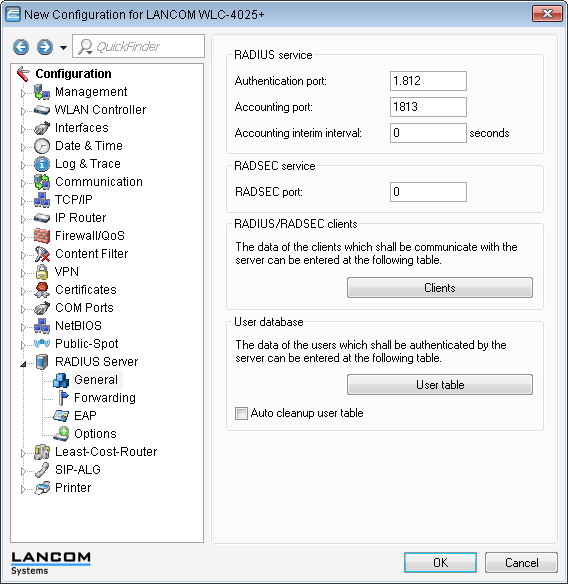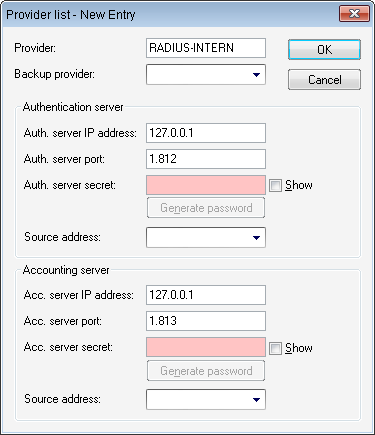In LCOS versions prior to 7.70, Public Spot access accounts were defined by entering
users into the Public Spot module's user list by using the Wizard. As of LCOS version
7.70, the Wizard no longer stores the Public Spot access accounts in this list, but in the
user database of the internal RADIUS server instead. In order to use Public Spot access
accounts, the RADIUS server must be configured and the Public Spot module must be set to use
the RADIUS server.
-
In order to use the user database in the internal RADIUS server, the RADIUS server in
the LANCOM must be activated first. Activate the RADIUS server by entering authentication
and accounting ports. Use the authentication port '1812' and the accounting port
'1813'.
Note: If appropriate please activate the "Auto cleanup user table" option to ensure, that
entries not used any longer can be deleted automatically from the user database.
-
In order for the Public Spot access accounts to be authenticated by the LANCOM's
internal RADIUS server, the Public Spot must know the address of the RADIUS server. To
ensure that this is the case, under create a new entry to define the internal RADIUS server as a
"Provider". Enter the IP address for the LANCOM with the activated RADIUS server
as the authentication and accounting server.
Note: If the Public Spot and the RADIUS server are provided by the same LANCOM, enter the
device's internal loopback address (127.0.0.1) here.
Note: After an LCOS update, user accounts that were created in the Public Spot
module's user list with previous versions of LCOS are still valid.

